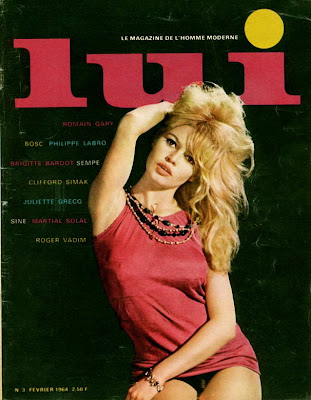The leather jacket

Lenny Bruce’s legend is like a funhouse mirror. From one angle, he is a free speech icon, celebrated for breaking down barriers that had limited what a performer could do and say onstage. From another, he was a “sick” comedian, pioneering the use of profanity and exploring taboo topics like race and sex. More recently, he’s been depicted as a lovable rascal on “The Marvelous Mrs. Maisel.” Now a short film recently acquired by Brandeis University’s Lenny Bruce collection shows a lesser-known side of Bruce: aspiring filmmaker.
The untitled 12½-minute film, available for viewing at Brandeis by request, may be a collaboration between Bruce and jazz musician “Count” Lewis DePasquale, though details of its origin are not known. It was acquired at an auction that also featured a collection of materials related to DePasquale’s unfinished memoir about his time with Bruce.
Before he made a name for himself as a comedian, Bruce moved from New York to Los Angeles in 1953 to work on films. By 1959, he was done with film and back working clubs in New York. “I think Lenny, when he came out to Hollywood, thought that that’s what he was going to do, he was going to become a film writer,” says Robert Weide, director of the 1989 documentary “Lenny Bruce: Swear to Tell the Truth.”
Few traces remain of Bruce’s film career that are accessible to the public. His B-movie gangster flick “Dance Hall Racket” is available on YouTube. “Dream Follies,” a comedy Bruce wrote and starred in, is part of the Brandeis collection and available to researchers. While still in LA, he started work on an independent film called “The Leather Jacket,” about a down-on-his-luck schlub who sells newspapers on the corner and dreams of owning a black leather motorcycle jacket. He’d hoped the film would attract the interest of Hollywood studios, but it was never finished and little of it is available to the public, save for a disjointed short that surfaced on YouTube in January under the title “Black Leather Jacket” from Historic Films Stock Footage Archive.
Advertisement
The film in the Brandeis archives shares some of the same footage as “Black Leather Jacket,” and both appear to be different cuts of “The Leather Jacket.” Both start in the same place, but the Brandeis film veers off after a couple of minutes when Bruce’s character gets kicked out of a flophouse for cooking in his room. He tries to hitchhike, but no one will pick him up. Bruce plays it mostly melancholy until the end, when a drug dealer accidentally spikes his thermos, and he goes on a wild dance through the city before collapsing in what looks like an overdose.
The film is silent with a jazz and classical score, which is perhaps where DePasquale’s contribution lies. Brandeis purchased the film at an auction of items from DePasquale’s estate, and since DePasquale died in 2001, how it got made and who else might have worked on it remain a mystery. Weide says Bruce would often make fast friends and plans, only to abandon them when a new idea occurred to him. “I think he was very mercurial that way, where he’d start a project, get really hyper-involved and everybody had to come over to his house right away and get involved while he was hot on the idea,” he says. “There’d be a few days of that and he’d get tired of it and move on and never complete it.”
Sarah Shoemaker, associate university librarian for archives and special collections at Brandeis’s Goldfarb Library, says the film is a valuable addition to the Lenny Bruce collection — an archive of photos, letters, recordings, newspaper clippings, and more. Unlike those personal belongings, she notes, it is an artistic work. “This was a character he created that he played that he wanted to put into the world,” Shoemaker says. “You can see it, you can watch it, you can analyze it the way you would a film.”
.jpeg)


Commentaires
Enregistrer un commentaire